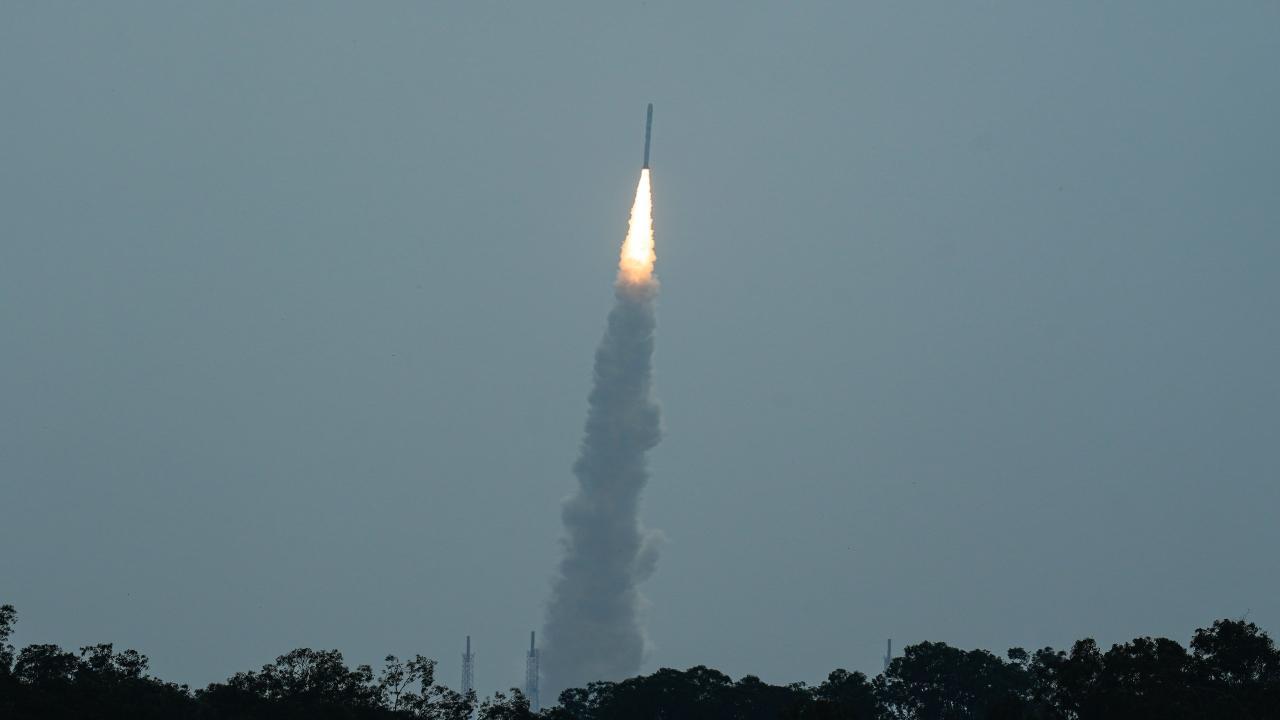ISRO on Friday launched its third and final developmental flight, Small Satellite Launch Vehicle-D3, carrying Earth Observation Satellite EOS-08. The rocket lifted off from the first launch pad at the Satish Dhawan Space Centre in Sriharikota, Andhra Pradesh at a pre-fixed time of 9.17 am

The objectives of the mission include designing and developing a microsatellite and creating payload instruments compatible with the microsatellite bus, ISRO said. Pic/PTI
The Indian Space Research Organisation (ISRO) on Friday launched its third and final developmental flight, Small Satellite Launch Vehicle-D3, carrying Earth Observation Satellite EOS-08.
The rocket lifted off from the first launch pad at the Satish Dhawan Space Centre in Sriharikota, Andhra Pradesh at a pre-fixed time of 9.17 am.
The objectives of the LV-D3-EOS-08 mission include designing and developing a microsatellite and creating payload instruments compatible with the microsatellite bus, the Bengaluru-headquartered national space agency said.
SSLV-D3/EOS-08 Mission:
— ISRO (@isro) August 16, 2024
✅The third developmental flight of SSLV is successful. The SSLV-D3 🚀placed EOS-08 🛰️ precisely into the orbit.
🔹This marks the successful completion of ISRO/DOS's SSLV Development Project.
🔸 With technology transfer, the Indian industry and…
The smallest SSLV rocket, which measures about 34 metres in height, was planned for launch by ISRO on Thursday at 9.17 am but was later rescheduled to Friday at 9.19 am from the first launch pad.
Built on the Microsat/IMS-1 bus, EOS-08 carries three payloads: Electro Optical Infrared Payload (EOIR), Global Navigation Satellite System-Reflectometry payload (GNSS-R) and SiC UV Dosimeter, ISRO informed.
The EOIR payload is designed to capture images in the Mid-Wave IR (MIR) and Long-Wave IR (LWIR) bands, both during the day and night, for applications such as satellite-based surveillance, disaster monitoring, environmental monitoring, fire detection, volcanic activity observation and industrial and power plant disaster monitoring.
The GNSS-R payload demonstrates the capability of using GNSS-R-based remote sensing for applications such as ocean surface wind analysis, soil moisture assessment, cryosphere studies over the Himalayan region, flood detection, and inland waterbody detection.
The SiC UV Dosimeter monitors UV irradiance at the viewport of the Crew Module in the Gaganyaan Mission and serves as a high-dose alarm sensor for gamma radiation.
The spacecraft is designed for a mission duration of one year. It has a mass of approximately 175.5 kg and generates power of around 420 Watts.
Before the launch, ISRO Chairman Somanath visited the Chengalamma Temple to offer prayers. Special pujas were performed at the temple for the success of the mission.
(With ANI inputs)
 Subscribe today by clicking the link and stay updated with the latest news!" Click here!
Subscribe today by clicking the link and stay updated with the latest news!" Click here!










